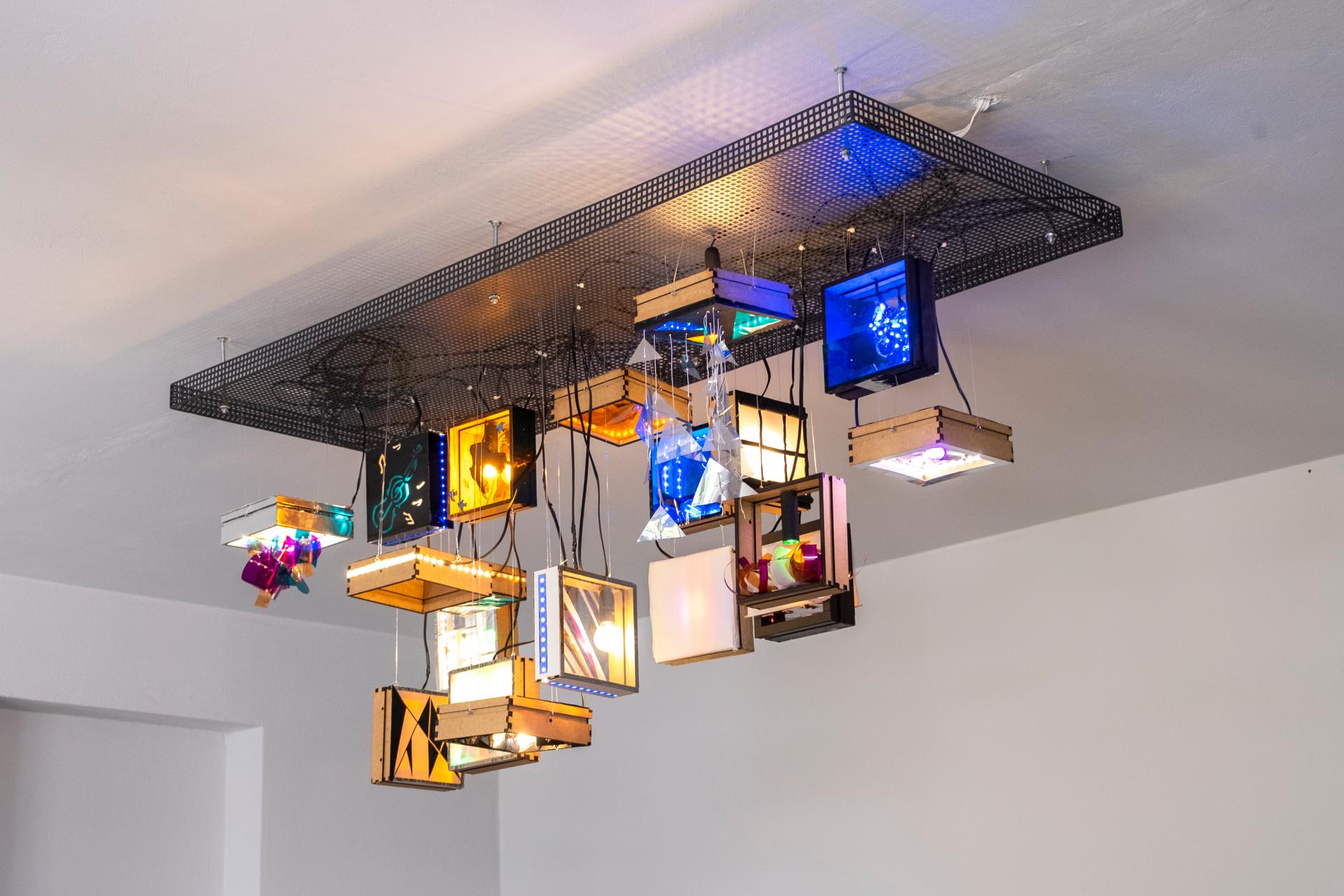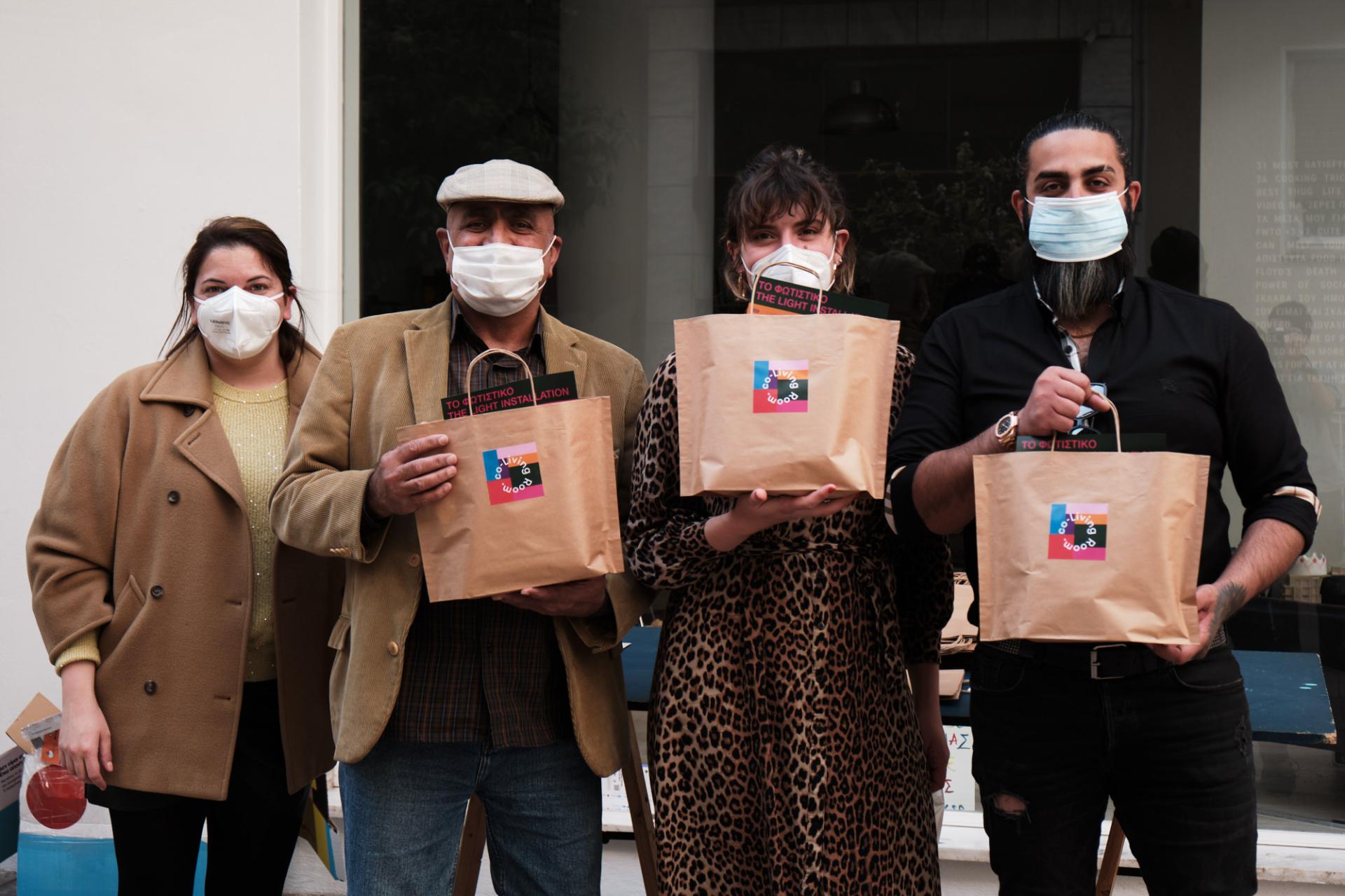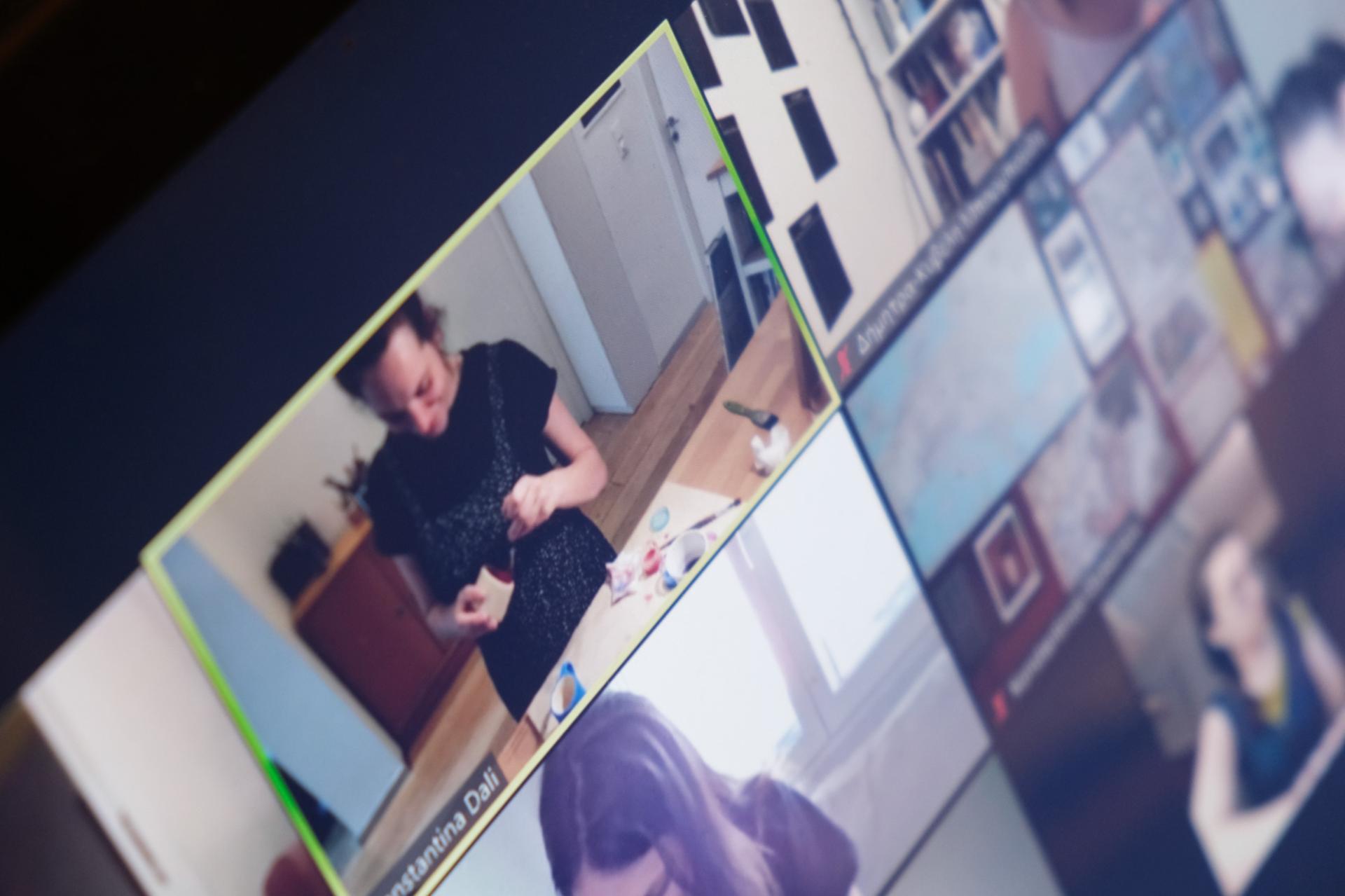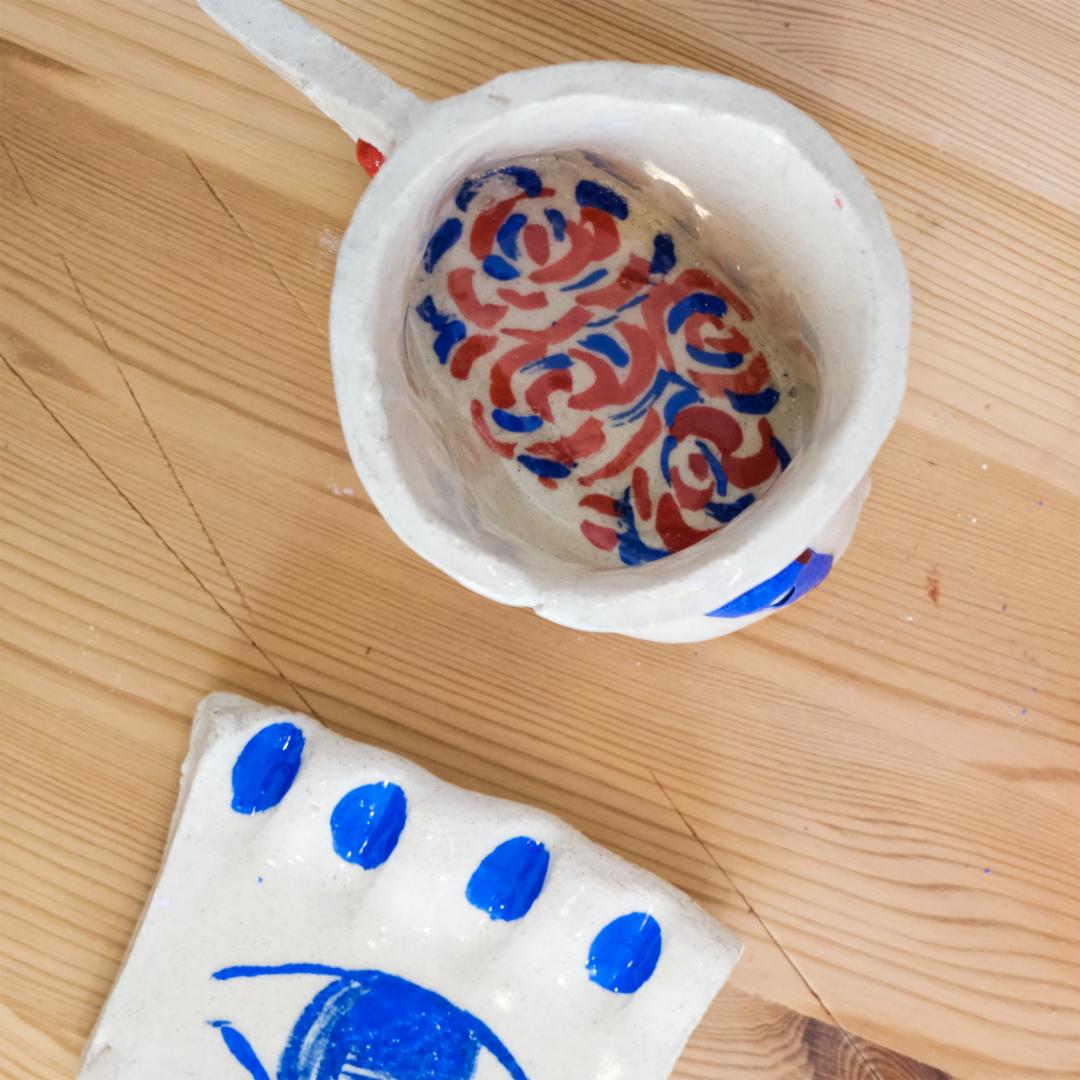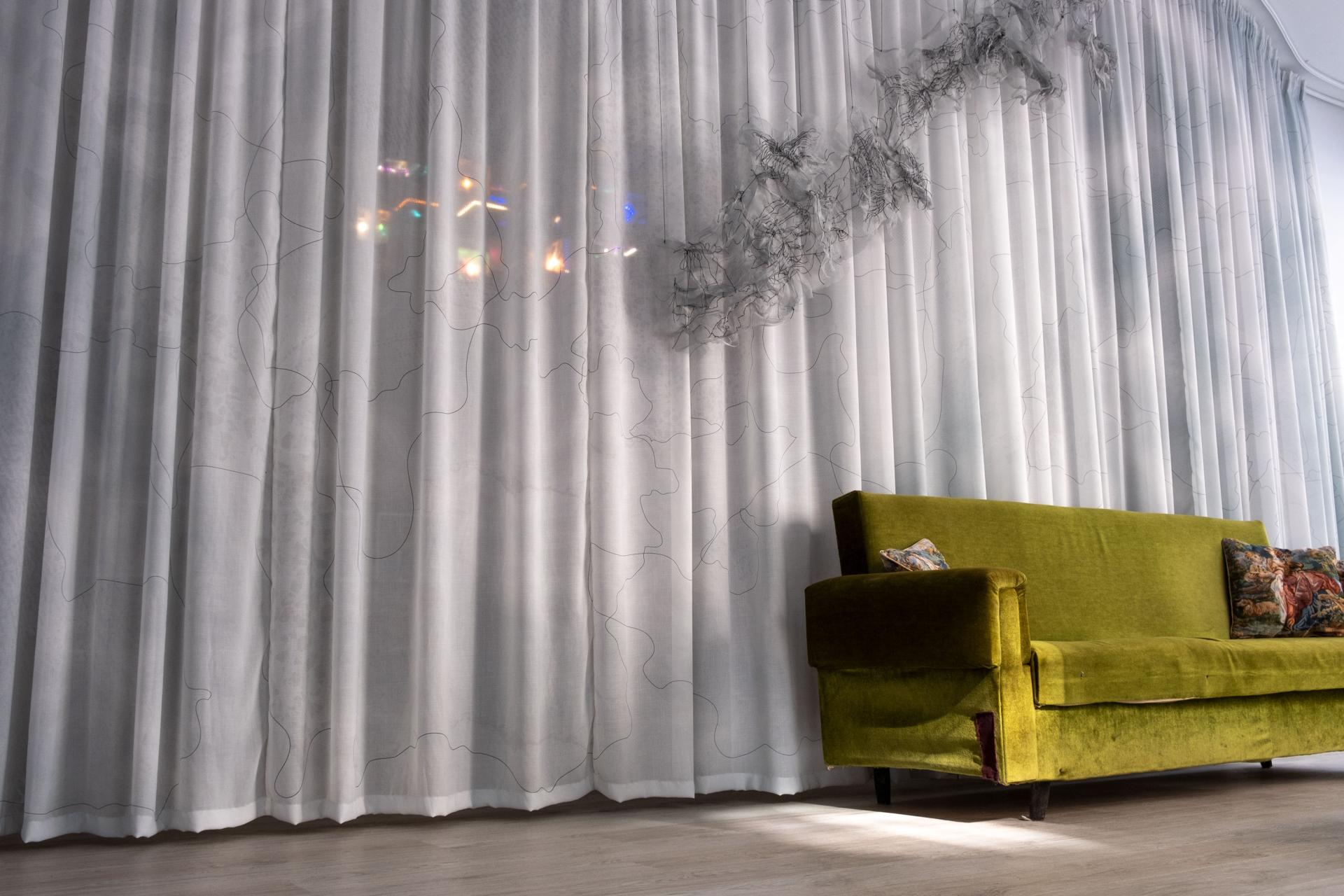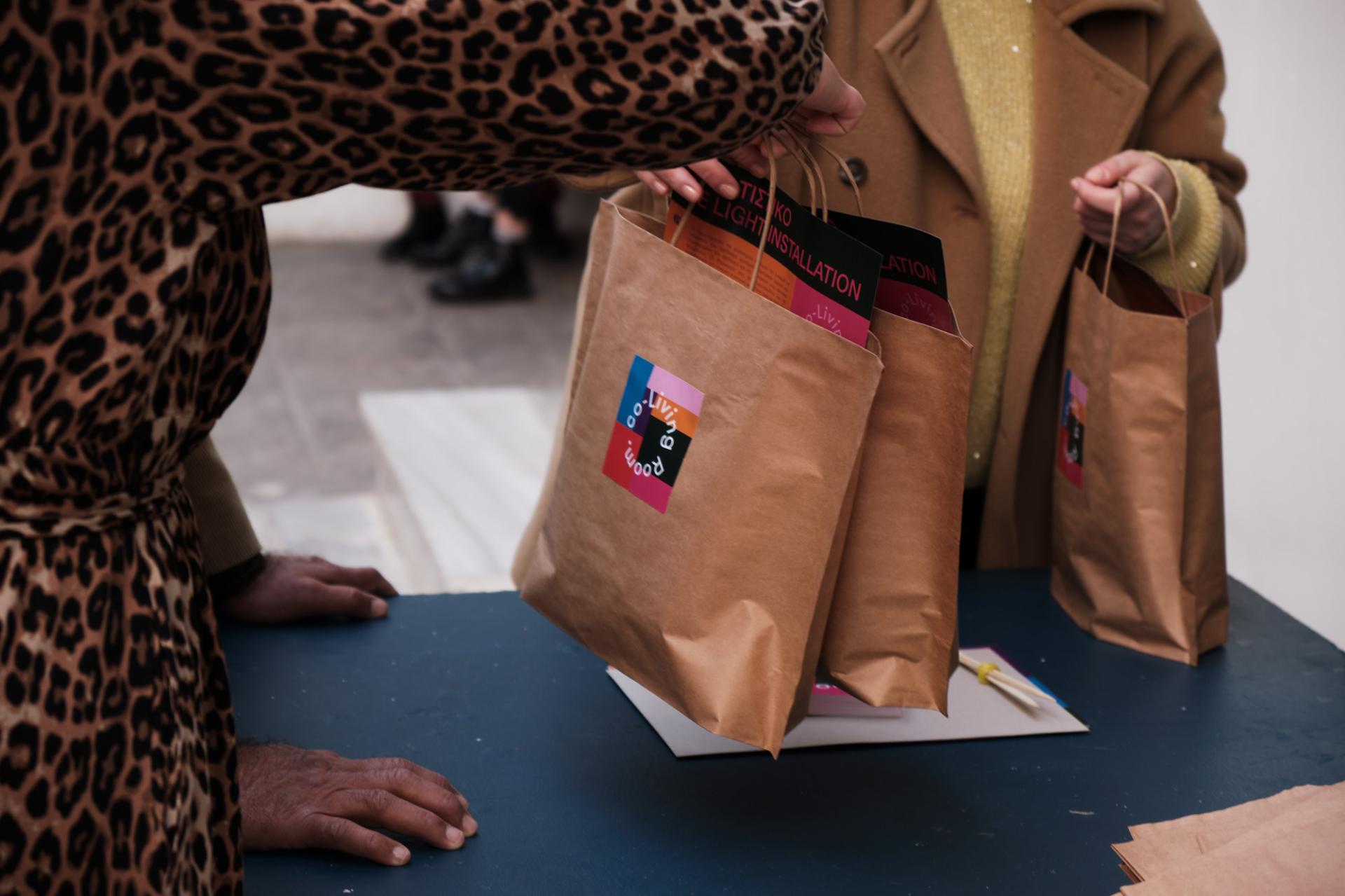Co-Living Room
Basic information
Project Title
Category
Project Description
The co-Living Room Community is an innovative, interdisciplinary and participatory project implemented during the Covid-19 quarantine. The project challenged the way we comprehend social inclusion, collective design and social integration via contemporary art methods and cultural exchange.The VSP team, artists, designers, local professionals of refugee or migrant background developed a hybrid creative community engagement methodology through an inclusive and accessible digital space for all.
Geographical Scope
Project Region
Urban or rural issues
Physical or other transformations
EU Programme or fund
Which funds
Description of the project
Summary
The co-Living Room Community was formed in 2021 as a virtual community of individuals that in April and May 2021 e-connected their living rooms and created a non-discriminative common space to encourage the exchange of ideas, participatory art, design practices and entertainment for all, as a response to the isolation during the long term Covid19 lockdown.
It was designed by the Victoria Square Project team, artists, designers and local professionals of refugee or migrant background introduced by the co-Athens program, aiming at their further social integration. The project came as a necessity to think of new ways of meeting each other, thus reimagining a new Living Room that would temporarily substitute Victoria Square Project’s physical Living Room for all in the neighbourhood of Victoria Square in Athens. The community members had the opportunity to discuss and learn about art and design through free pottery, creative lighting and embroidery workshops, afro gym classes and thematic community meetings, while co-create collaborate works that resulted into physical objects like mugs, seats, a paravan, a light installation... The six month program was formed as part of a quest of these elements that could unify the community as a whole and highlight the multiple characteristics of the individual identities.
All these activities have a hybrid nature as the participants had to pass by VSP in order to receive their “workshop kits”, later have the collective workshop online and after this bring back their results in order for the team to assemble all the parts into one collective work. All these works are still integral physical parts of the VSP’s Living Room. The co-Living Room changed the way the physical space of VSP is seen and used, as the community contributed in the co-creation of an inclusive and accessible space for all.
Key objectives for sustainability
The co-Living Room Community was a sustainable project on an economical, environmental and social level. The materials used for the artworks were bought from local enterprises, in that way the budget was invested in the local market. On top of that, 90% of the materials were recyclable in order to minimise littering and cultivate environmental care and responsibility to the community. Additionally, we reintroduced the use of materials with a specific utility, such as the hen wire, where the embroidery was weaved, or the transparent paper used to create different nuances on the reflection of the light installation, instead of choosing colourful lighting. Through the project we intended to foster creativity as a solution for environmental and social global challenges.
Key objectives for aesthetics and quality
High quality in learning processes and creative practices were at the core of our work. We carefully selected the involved workshops and meetings’ leaders based on their prior work but also their capacity to inspire and “infuse” knowledge despite the unknown circumstances. We were not just keen to spend some joyful time together, to actually learn together, especially by giving free access to rather costly professional level workshops. Aesthetics have exceeded our expectations as you will be able to see in the photos as well, thus all these works are still present in the space as a reminder of our common effort. “Beforelight”specialised in creative urban light installation, along with Dimitra Aloutzanidou invited the members to create their own lighting artworks inspired by their personal journeys and cultural origins. After the workshops, the different pieces of the installation were collected and composed in one object, the central lighting of VSP’s actual living room. The pottery workshops, held by the sculptor Constantina Dali, focused on the shaping of an everyday object, a mug, that represents the ritual of coming together and sharing a cup of coffee or tea beyond identities and culture. Through the procedure, the participants explored the art of ceramics, experimented with materials and techniques and finally formed a ceramic mug, as a symbol of a common language..
During the Paravan workshop by Maria Foka and Sevastiana Konstaki, the community created a collective sculpture, a paravan, where the participants weaved their personal journeys and personal insights around the concepts of travel, movement, route, trail and transition. The PARAVAN enclosed embroidery and sewing techniques, of which free motives, volumes and designs, a multilayer and textured surface came up. The AfroBeat is a type of dance that became popular in the ‘70s. It comes directly from the popular street dances of Africa, like Kuduro, Azonto, Soukous and more.
Key objectives for inclusion
Victoria Square Project is located on Victoria Square, is home to people of different origins from Pakistan to Ukraine and from Spain to Congo. Victoria Square Project invited artists and creatives to work with VSP neighbours, who, inspired by traditional art practices from the countries of origin of our neighbours, blended new to traditional practices and then created new art models and methods. The main aim of the project is the creation of a unique public sphere in which public space, cultural habits, sociality and contemporary creativity will be debated and through which a new narrative will arise.This was intended for creating a familiar and inclusive environment for our neighbours by making them take the pride of their routes, while at the same time they would find a common new identity, that of the contemporary Athenian:
-->Create a physical image of the contemporary Athenian identity being formed over the last years through a creative experimentation.
-->Boost the self-esteem of the local communities, through their cultural representation in the public space and the recognition of the cultural value their bring.
-->Promote active citizenship and engagement of all citizens.
-->Give access to learning, design and art.
Results in relation to category
The co-Living Room Community consisted of an invitation to individuals of diverse backgrounds to collectively transform Victoria Square Project ground floor, aka living room. They connected their realities, cultural origins, journeys and lifestyles to a single or a collective set of objects, exchanged experiences and co-created their own inclusive microcosm. As a result, the community repurposed VSP space by transforming it from just a space to a mosaic of cultures, where every single member of the community can identify and feel they belong
How Citizens benefit
The project implicated many different parties in different levels of its process. To begin with, the co-Living Room Community was designed with refugees, members of the European pilot program of the Municipality of Athens “Curing the Limbo”. Additionally each project was designed or co-designed with creative groups, artists and members of the community and extensive network of Victoria Square Project that has been ever developing since 2017. While the artworks created during the workshops, were the collective efforts and inspiration of all the participants of each workshop. The aforementioned involvement contributed to the creation of a strong, resilient community.
Physical or other transformations
Innovative character
The co-Living Room was an innovative, interdisciplinarity project.
- It adopted a hybrid model that ensured the commitment and integration of all the participants.
- It provided specialised solutions for specific groups of people to achieve integration
- It brought together social workers with international experience, artists and local communities to a common discourse
- The project repurposed the design as a method to highlight different lifestyles, cultures and identities
Learning transferred to other parties
The project development took under consideration the local need and challenges. However, the methods and models created are not necessarily limited at a local level, but could be adapted in different realities, countries and contexts. For that reason, we developed a written manual that could be shared and further developed with different parties and contexts.

